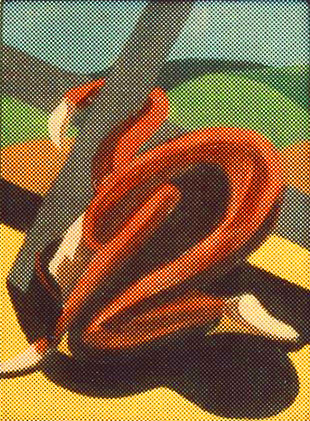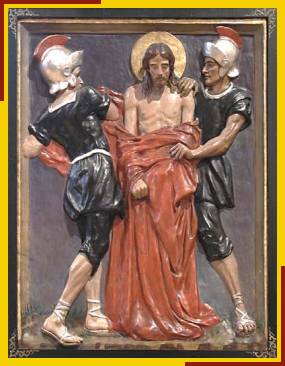Holy
week...probably one of the most dramatic and emotional weeks in the liturgical
calendar.
It
is not uncommon for the events of this week to bring tears to your eyes.
Today, I
wanted to recap the week. Using the Bible and following the Stations of
the Cross, just take a look at the final week of the life of Jesus.
Please
wait until you have time to meditate on these events and can read through it
without being rushed.
So to
start off, we have Jesus’ triumphant entry into Jerusalem. Imagine all the people in the area flocking
to Jerusalem for the celebration of Passover.
This was before Facebook or Google, even if people had heard of Jesus…the
probably did not know what he looked like.
In the book of Daniel, there was a prophecy that Christ would come
during the 4th reign of the super powers that be. Well, 4 super powers later, we have the
Romans. According to the Prophecy of
Daniel, it is time.
Then we
have Jesus, who is the Son of God, the bringer of the new Kingdom! Yet, he hasn’t really made too many signs
that he is a king or at least the king that they were used to.
At this
time, it was both Jewish and Roman law that it was perfectly acceptable for a
king to commandeer an animal, kind of like a cop taking someone’s car in just
about every cop movie ever made. So
Jesus starts off by stealing a donkey.
The first sign that he is a king.
Then he rides that donkey into Jerusalem! During Passover!!! Now, he stood out. But why?
So the
journey to Jerusalem for Passover was a spiritual journey, a pilgrimage. Pilgrimages were walked. Everyone walked. Everyone.
Not
Jesus. Another sign of a king.
The fact
that it was a donkey was important too.
The horse was a symbol of war. It
was ridden by kings who were at war or wanted to send the impression that they
were powerful and ruled with their strength.
Jesus rode on a donkey. The sign
of peace.
The
cheered and waved leafy palm branches…yet another sign that he was a peaceful
king.
This, as
we know, is Palm Sunday. When Jesus
arrives in Jerusalem to cheers of Hosanna.
Day 2
Monday.
After spending the night in Bethany, Jesus and
the disciples return to Jerusalem. He curses
a fig tree on his way for it did not bear fruit. The tree grew, it looked right, but it did
not grow figs. This was a commentary on
the nation being spiritually barren.
They said the right things and appeared to be religious, but were empty
inside.
After
arriving in Jerusalem again, Jesus
overturned the tables and drove out the money changers saying, “The Scriptures
declare, “My Temple will be a house of prayer, ‘but you have turned it into a
den of thieves.” (Luke 19:46).
Day 3
Tuesday.
Jesus
talks with the Pharisees as they try to trap him so they could arrest him. Jesus replies,
“You nest of poisonous snakes! How will you
escape from being sentenced to hell?”
Today is also the day that Judas Iscariot negotiated the
betrayal of Jesus.
Day 4
Wednesday.
Jesus and his disciples rest in preparation for Passover.
Day 5.
Thursday.
After sunset, Jesus washes the feet of his disciples as they
prepared to share in Passover. They
celebrated Communion with each other, the Last Supper.
Afterwards, Jesus goes to the Garden of Gethsemane to pray.
Later that evening, Judas betrays Jesus with a kiss. All the pieces were already in place for his
trial.
Day 6.
Friday.
Early in the morning, Judas Iscariot, over come with remorse,
hanged himself before the trial of Jesus started.
At his trial endured false accusations, condemnation,
mockery, beatings, abandonment.
Bringing us to Station I: Jesus is Condemned to Death.

Betrayed. Falsely
accused. Jesus accepts his fate. To die by crucifixion.
Station
II: Jesus Carries His Cross

To further humiliate Him, Jesus is forced to bear his own
cross. Carry the very thing he would die
on, to the place where he would draw his last breath.
Station III: Jesus Falls the First Time

The weight is unbearable.
Jesus falls under it. How could
he enter our lives completely without surrendering to the crushing weight of
the life of so many on this earth! He
lays on the ground and knows the experience of weakness beneath unfair
burdens. He feels the powerlessness of
wondering if he will ever be able to continue.
He is pulled up and made to continue.
Station IV: Jesus Meets His Mother
Jesus' path takes him to a powerful source of his strength
to continue. All his life, his mother
had taught him the meaning of the words, "Behold, the handmaid of the
Lord." Now they look into each
other's eyes. How pierced-through her
heart must be! How pained he must be to
see her tears! Now, her grace-filled
smile blesses his mission and stirs his heart to its depth. Love and trust in God bind them together.
Station
V: Simon helps Jesus carry His Cross
Jesus even experiences our struggle to receive help. He is made to experience the poverty of not
being able to carry his burden alone. He
enters into the experience of all who must depend upon others to survive. He is deprived of the satisfaction of
carrying this burden on his own.
Station
VI: Veronica wipes the face of Jesus

Jesus' journey is at times brutal. He has entered into the terrible experiences
of rejection and injustice. He has been
whipped and beaten. His face shows the signs of his solidarity with all who
have ever suffered injustice and vile, abusive treatment. He encounters a compassionate, loving
disciple who wipes the vulgar spit and mocking blood from his face. On her veil, she discovers the image of his
face - his gift to her. And, for us to
contemplate forever.
Station VII: Jesus falls the second time.

Even with help, Jesus stumbles and falls to the ground. In deep exhaustion he stares at the earth
beneath him. "Remember, you are
dust and to dust you will return."
He has seen death before. Now he
can feel the profound weakness of disability and disease and aging itself,
there on his knees, under the weight of his cross.
Station VIII: Jesus meets the women of Jerusalem
The women of Jerusalem, and their children, come out to
comfort and thank him. They had seen his
compassion and welcomed his words of healing and freedom. He had broken all kinds of social and
religious conventions to connect with them.
Now they are here to support him.
He feels their grief.
Even as he bears his own cross, he still comforts the women
of Jerusalem. Consoling them as best he
could.
Station IX: Jesus Falls the Third Time

This last fall is devastating. Jesus can barely proceed to the end. Summoning all this remaining strength,
supported by his inner trust in God, Jesus collapses under the weight of the
cross. His executioners look at him as a
broken man, pathetic yet paying a price he deserves. They help him up so he can make it up the
hill of crucifixion.
Station X: Jesus is Stripped

Part of the indignity is to be crucified naked. Jesus is
completely stripped of any pride The
wounds on his back are torn open again.
He experiences the ultimate vulnerability of the defenseless. No shield
or security protects him. As they stare
at him, his eyes turn to heaven.
Station XI: Jesus is Nailed to the Cross

Huge nails are hammered through his hands and feet to fix
him on the cross. He is bleeding much
more seriously now. As the cross is
lifted up, the weight of his life hangs on those nails. Every time he struggles to pull himself up to
breathe, his ability to cling to life slips away.
Station XII: Jesus Dies On The Cross

Between two criminals, a mocking title above his head, with
only Mary and John and Mary Magdalene to support him, Jesus surrenders his last
breath: "Into your hands I commend
my spirit."
Station XIII: Jesus is Taken Down From the Cross.

Station XIV: Jesus is Laid In The Tomb.
They take the body of Jesus to its resting place. The huge stone over the tomb is the final
sign of the permanence of death. In this
final act of surrender, who would have imagined this tomb would soon be empty
or that Jesus would show himself alive to his disciples, or that they would
recognize him in the breaking of bread?
Oh, that our hearts might burn within us, as we realize how he had to
suffer and die so as to enter into his glory, for us.
Acknowledgements
The text the Stations is from a Jesuit Source
http://www.creighton.edu/CollaborativeMinistry/stations-prn.html
No comments:
Post a Comment